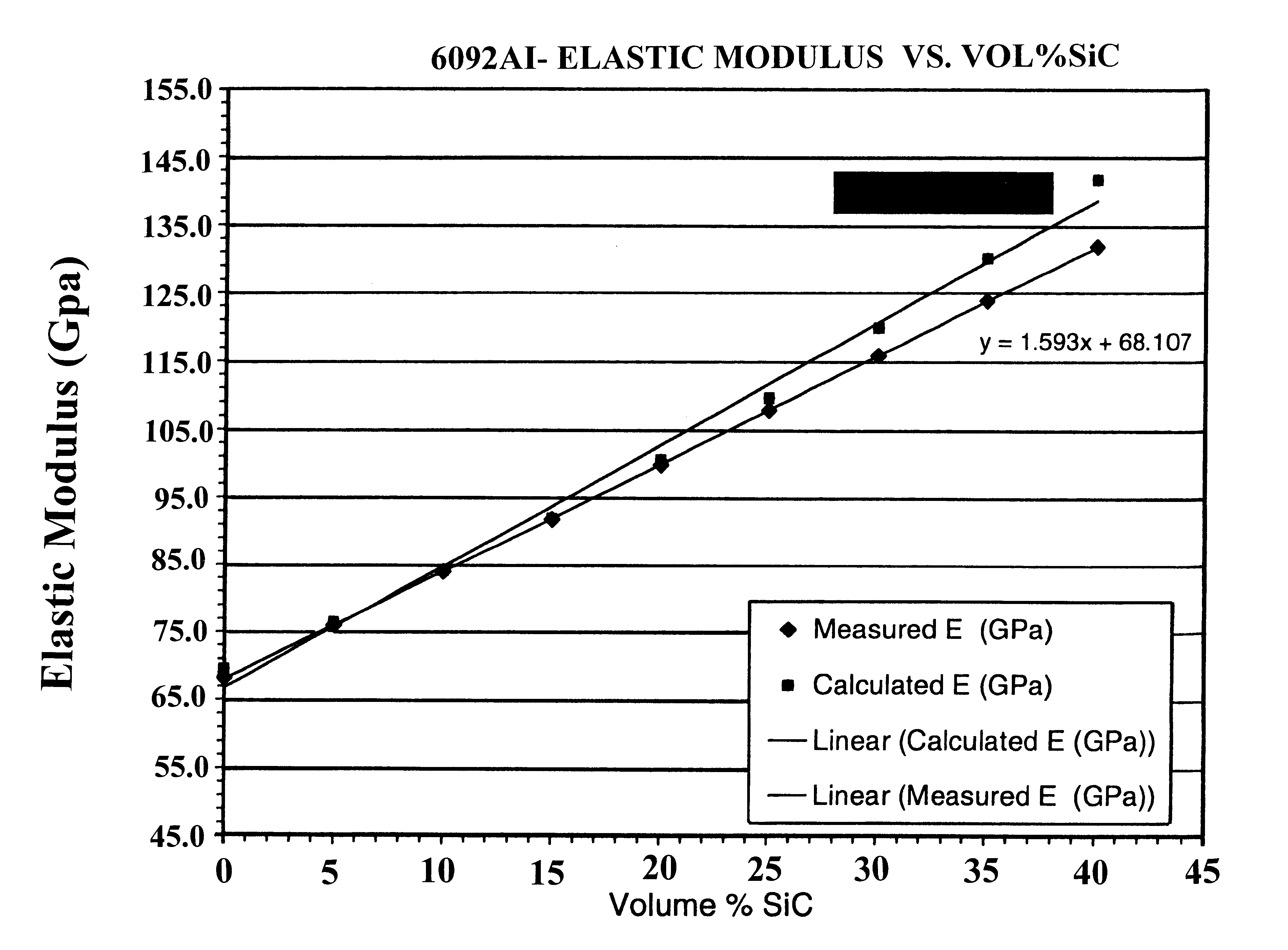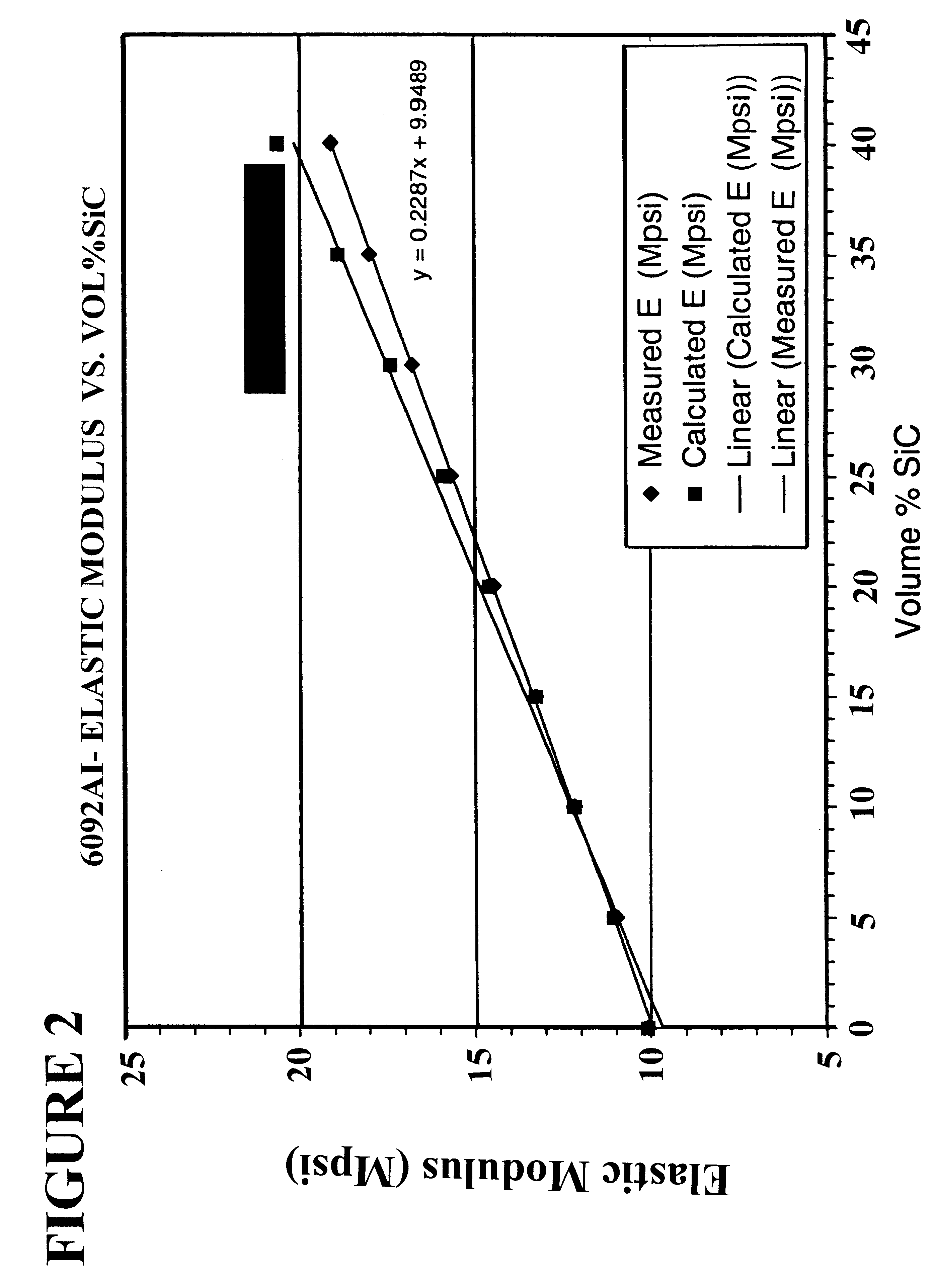Metal matrix composite
a metal matrix and composite material technology, applied in the direction of solid-state devices, electrical devices, prostheses, etc., can solve the problems of increasing the concentration of silicon, reducing the interface strength, and the reaction is believed to have detrimental effects on the mechanical properties of the resulting composite material, so as to reduce the weight, increase the hardness, and reduce the effect of weigh
- Summary
- Abstract
- Description
- Claims
- Application Information
AI Technical Summary
Benefits of technology
Problems solved by technology
Method used
Image
Examples
example 2
A metal matrix composite of aluminum alloy 6061 base metal material and 25 weight % boron carbide. This composite material is extrudable and exhibits a tensile strength of 71.9 kpsi and a yield strength of 62.6 kpsi. This formulation is useful for brake discs and marine castings. It has corrosion resistance and wearability.
example 3
A metal matrix composite of aluminum alloy 6061 base metal material and 30 weight % boron carbide. This composite material is extrudable and exhibits a tensile strength of 62.3 kpsi and a yield strength of 58.4 kpsi. This formulation may be used for structural stiffness for marine applications or nuclear shielding since it has strength and corrosion resistance.
example 4
A metal matrix composite containing aluminum alloy 7091 base metal material and 20 weight % boron carbide. This composite material exhibits a tensile strength of 98.6 kpsi, a yield strength of 89.2 kpsi, and is extrudable. This composition has utility for spacecraft and satellites. It has low thermal expansion and high tensile strength.
PUM
| Property | Measurement | Unit |
|---|---|---|
| density | aaaaa | aaaaa |
| density | aaaaa | aaaaa |
| size | aaaaa | aaaaa |
Abstract
Description
Claims
Application Information
 Login to View More
Login to View More - R&D
- Intellectual Property
- Life Sciences
- Materials
- Tech Scout
- Unparalleled Data Quality
- Higher Quality Content
- 60% Fewer Hallucinations
Browse by: Latest US Patents, China's latest patents, Technical Efficacy Thesaurus, Application Domain, Technology Topic, Popular Technical Reports.
© 2025 PatSnap. All rights reserved.Legal|Privacy policy|Modern Slavery Act Transparency Statement|Sitemap|About US| Contact US: help@patsnap.com



